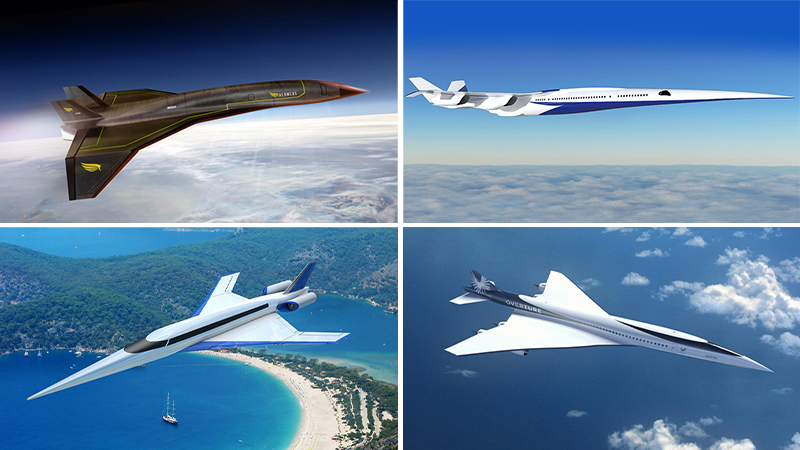

In late March, we discussed Boom Supersonic, an aerospace company in the running to be the new Concorde. But as we mentioned, there’s renewed interest in the supersonic aircraft industry. As such, Boom isn’t the only company looking to drastically reduce flight times.
Below, we’ll look at some other manufacturers attempting to break open this potentially lucrative subsector of aerospace.
First up is Hermeus, a hypersonic startup founded in 2018. Whereas Boom is going straight for a commercial market with a Mach 1.7 aircraft, Hermeus is initially targeting the defence and intelligence sector. Its Chimera engine will be capable of a staggering Mach 5, which it plans to put into an autonomous aircraft by 2023.
If all goes well with its US Air Force contract, Hermeus plans to scale up and develop its passenger aircraft by 2023. The plan is for the Halcyon, its passenger aircraft, to also utilise its Mach 5 engine. This could make it capable of flying from London to New York in 90 minutes – just over twice as fast as Boom’s aircraft.
Then there’s Spike Aerospace, whose Spike S-512 jet is specifically designed for business flights. It’ll hold 12-18 passengers and will be capable of speeds of Mach 1.6, putting it more on par with Boom’s aircraft. In real terms, it’ll get from London to New York in 3.3 hours.
There isn’t a considerable amount of information available about the S-512. The company claims it’ll use proprietary quiet supersonic technology, which will equate to noise equivalent to a soft clap at ground level.
Finally, there’s ExoGsonic, founded in 2019. Like Hermeus, it’s currently working with the US Air Force to develop supersonic UAVs that will be used in flight training exercises. In the longer term, it plans to develop a supersonic passenger aircraft capable of Mach 1.8. It’ll hold 70 passengers and will be capable of London to New York in 3.5 hours.
All of these companies are on fairly similar roadmaps to commercial viability. While supersonic flight technology isn’t new, each company is working with far more modern systems than were available in Concorde’s time. Plus, if it could teach us anything, it would be the importance of keeping a project on budget.
But does supersonic flight need competition, considering it’s something we’ve done without for a long time? The short answer is yes, but a more in-depth answer would be that, to an extent, the companies listed above aren’t directly competing with each other.
For example, Spike Aerospace is targeting the business jet market, which is arguably one of the most sensible. After all, businesspeople would benefit the most from quicker flights and likely have the money to pay for it.
Hermeus and Boom could be seen as competitors, although Hermeus may have the upper hand due to its significantly faster speeds. It also has an element of competition with Exosonic, as both companies are working with the US Air Force during their development stages.
However, this level of competition is to be expected and could be a major benefit to the wider industry. After all, each company will need to demonstrate its advantage over the others because offering shorter flight times and supersonic speeds won’t be enough on its own. Provided each company can learn from previous mistakes in supersonic flight, the industry has a lot of potential to improve the lives of passengers.
